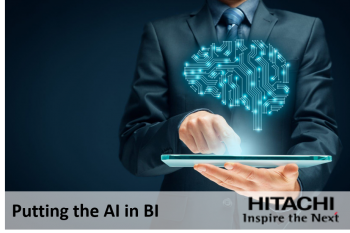
Since the term ‘Business Intelligence’ was coined in the late 80s, organisations worldwide have been leveraging BI to make sense of the huge amounts of data that they have. Through a set of analyses, BI enabled businesses to derive value and insight from data to make the best, informed decisions.
However, traditionally, harnessing this insight has complex, using technologies and tools that were developed for the technical experts in mind – those with extensive knowledge in both SQL programming as well as data analysis. This meant that they were only able to utilise the advanced data analysis software, while the majority of normal users were unable to execute BI tasks on their own. Moreover, formulating and delivering reports to decision-makers was a time-consuming process, held back by data which were held in distinct silos.
Today’s BI and analytics tools are an amalgamation of different functionalities including data access, query, analysis, reporting and presentation. The fact that these functionalities have become much simpler to use as well as accessible – able to be consumed on desktops, mobile devices, the web or even on cloud platforms. As improved techniques and technologies emerge, today’s solutions can also be used by a much wider range of users, and not just the data scientists and analysts.
However, we can see that the whole analytics experience with BI is now moving to the next step of its evolution; automation, brought on by the rise of AI technology. When it comes to discovering insights, AI has definitely changed how users interact with their data and workflows. The incorporation of machine learning has been especially important in that it allows BI systems to continuously learn from data, identify patterns and present predictions, actionable insights and other information with minimal human intervention.
Most importantly, machines are able to achieve all this at a fraction of the time.
As such, it isn’t surprising when TDWI Research found that only a small number of global organisations (14%) surveyed did not plan to adopt AI technologies to augment their BI, analytics, data management, or data integration implementations. The vast majority either already have an overall strategy and are following it, or are planning to make use of AI technology to a smaller degree – applying AI to individual departments or where they see fit.
As to how they’re using (or planning to use) AI/ML, the top three use cases are “to automate discovery of actionable data insights”, “to improve the accuracy and quality of information through smart automation”, and “to augment user decision making by giving recommendations”. Ultimately, it is about empowering users to be more productive, making processes faster and results more accurate.
The “BI and Analytics in the Age of AI and Big Data” report by TDWI Research explores the business impacts of new technologies such as AI, the challenges faced by companies adopting these technologies and offers recommendations and strategies for success. The report also takes a look at solutions offered by leaders and innovators in BI, analytics, and data management, such as Hitachi Vantara, to give a sense of where the industry as a whole is headed.
To download the report, click here.
 (0)
(0) (0)
(0)Archive
- October 2024(44)
- September 2024(94)
- August 2024(100)
- July 2024(99)
- June 2024(126)
- May 2024(155)
- April 2024(123)
- March 2024(112)
- February 2024(109)
- January 2024(95)
- December 2023(56)
- November 2023(86)
- October 2023(97)
- September 2023(89)
- August 2023(101)
- July 2023(104)
- June 2023(113)
- May 2023(103)
- April 2023(93)
- March 2023(129)
- February 2023(77)
- January 2023(91)
- December 2022(90)
- November 2022(125)
- October 2022(117)
- September 2022(137)
- August 2022(119)
- July 2022(99)
- June 2022(128)
- May 2022(112)
- April 2022(108)
- March 2022(121)
- February 2022(93)
- January 2022(110)
- December 2021(92)
- November 2021(107)
- October 2021(101)
- September 2021(81)
- August 2021(74)
- July 2021(78)
- June 2021(92)
- May 2021(67)
- April 2021(79)
- March 2021(79)
- February 2021(58)
- January 2021(55)
- December 2020(56)
- November 2020(59)
- October 2020(78)
- September 2020(72)
- August 2020(64)
- July 2020(71)
- June 2020(74)
- May 2020(50)
- April 2020(71)
- March 2020(71)
- February 2020(58)
- January 2020(62)
- December 2019(57)
- November 2019(64)
- October 2019(25)
- September 2019(24)
- August 2019(14)
- July 2019(23)
- June 2019(54)
- May 2019(82)
- April 2019(76)
- March 2019(71)
- February 2019(67)
- January 2019(75)
- December 2018(44)
- November 2018(47)
- October 2018(74)
- September 2018(54)
- August 2018(61)
- July 2018(72)
- June 2018(62)
- May 2018(62)
- April 2018(73)
- March 2018(76)
- February 2018(8)
- January 2018(7)
- December 2017(6)
- November 2017(8)
- October 2017(3)
- September 2017(4)
- August 2017(4)
- July 2017(2)
- June 2017(5)
- May 2017(6)
- April 2017(11)
- March 2017(8)
- February 2017(16)
- January 2017(10)
- December 2016(12)
- November 2016(20)
- October 2016(7)
- September 2016(102)
- August 2016(168)
- July 2016(141)
- June 2016(149)
- May 2016(117)
- April 2016(59)
- March 2016(85)
- February 2016(153)
- December 2015(150)
